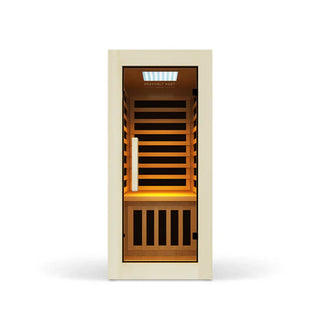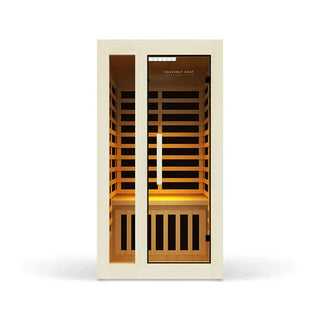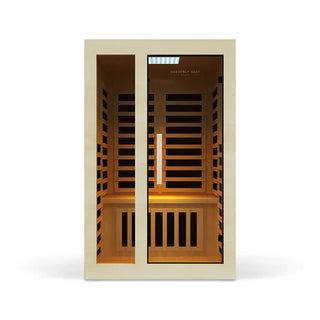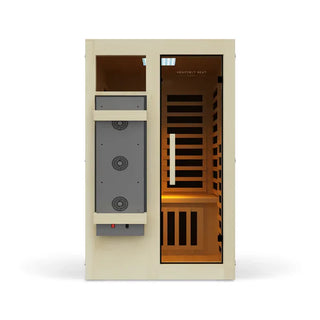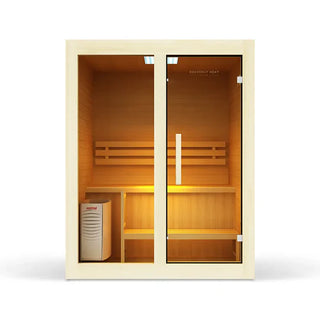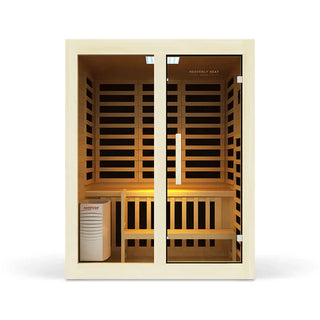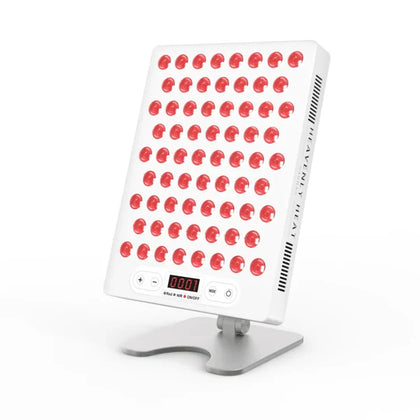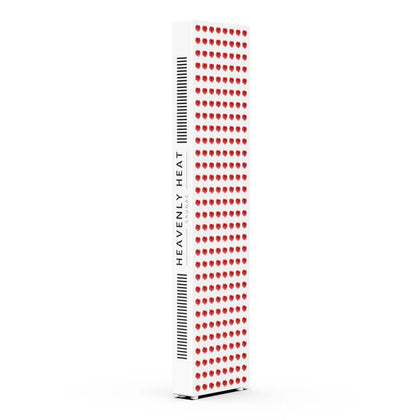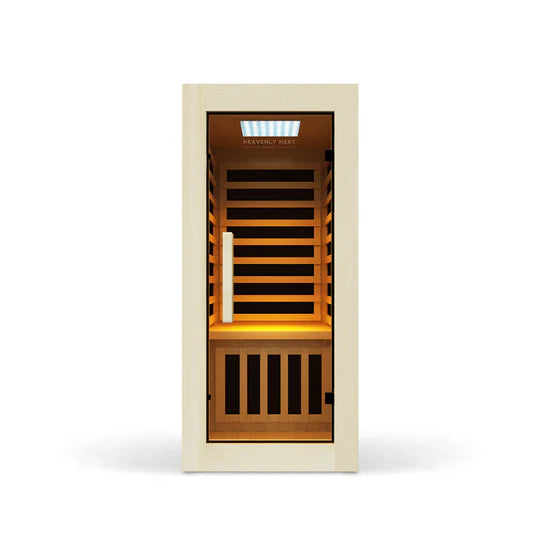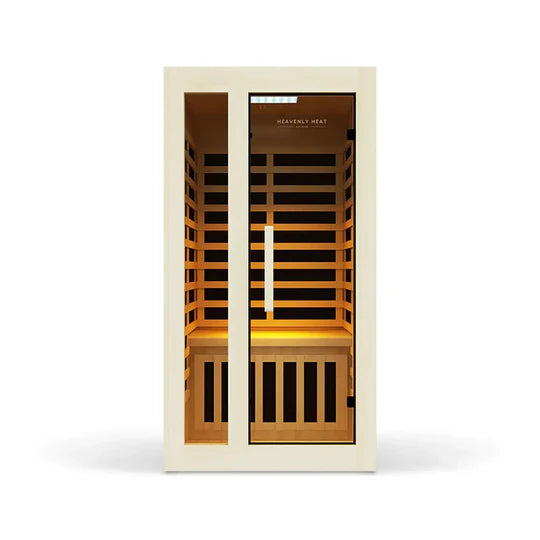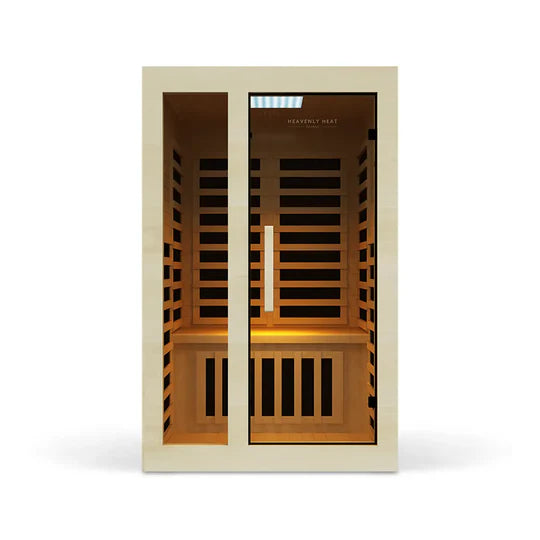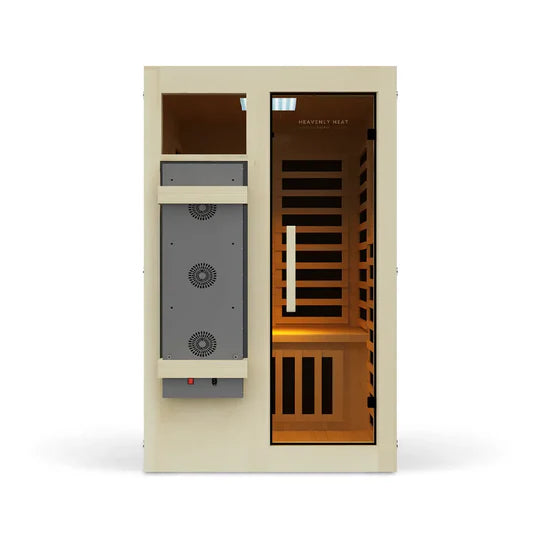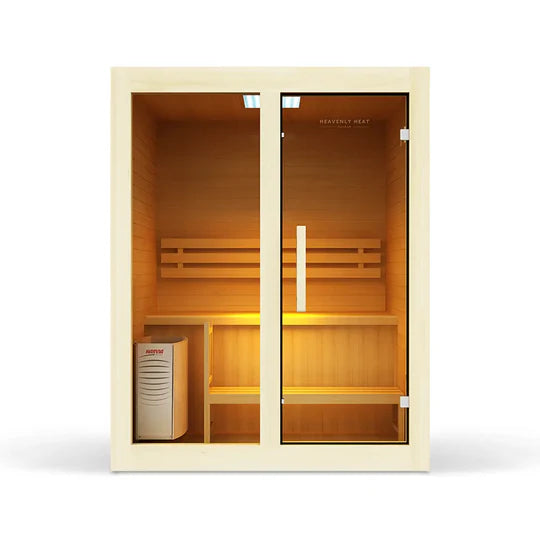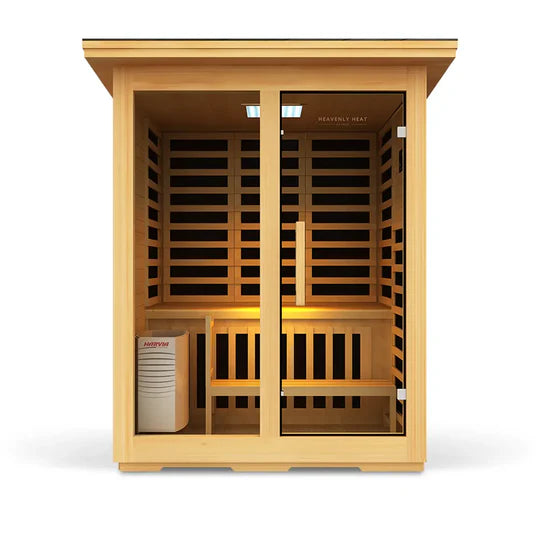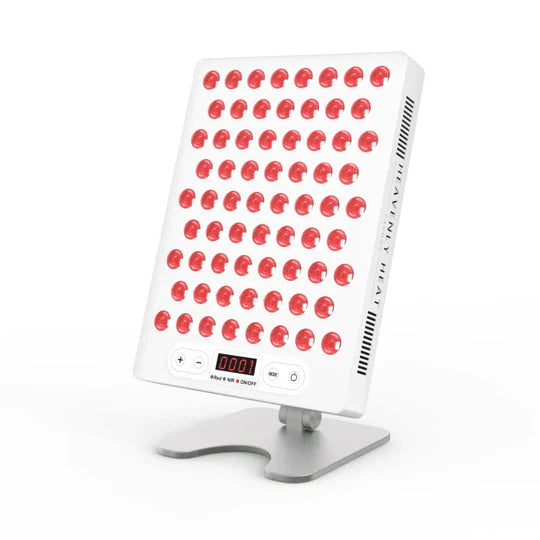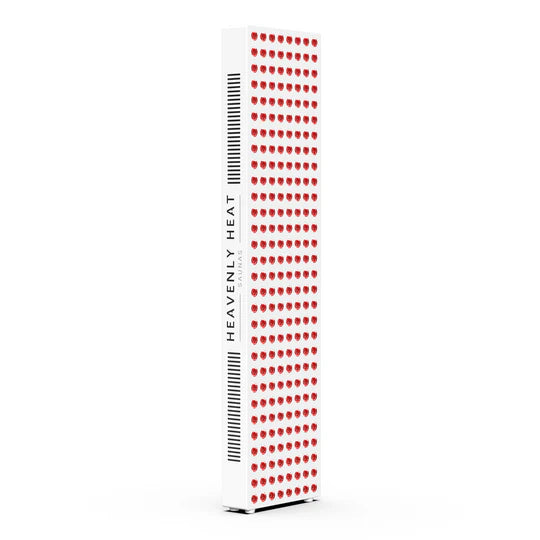Does Sauna Need Ventilation?

Ventilation is a crucial part of sauna design that many people overlook. Without proper airflow, saunas can quickly become uncomfortable, unsafe, and prone to damage.
Good ventilation keeps the air fresh, controls moisture, and maintains a steady temperature, ensuring a better, safer sauna experience. Let’s explore why ventilation matters and how to get it right.
Key Takeaways
Always Ensure Airflow: Proper ventilation keeps heat and oxygen levels safe.
Breathe Easy: Fresh air improves comfort and prevents dizziness.
Fight Moisture Damage: Good ventilation prevents mold and protects wood.
Don’t Block Vents: Keep vents clear and well-placed for balanced airflow.
Get the Right Setup: Use heat-safe materials and size vents based on sauna space.
Why Is Ventilation Important in a Sauna?
Prevents Dangerous Heat Buildup That Can Overwhelm the Body Quickly
- The body can quickly become overwhelmed by extreme heat: Without ventilation, the heat rises so fast that it becomes hard for the body to cope. What starts as a relaxing sauna can turn dangerous if the body overheats.
- Early signs show your body is in trouble: Dizziness, nausea, and confusion are some of the first signs that the body is getting too hot. These symptoms are a warning that your body is struggling in the heat.
- Heatstroke happens when your body can't cool down: If the heat continues to build and your body can't release it, your temperature can reach 104°F or more. This leads to heatstroke, a serious and potentially life-threatening condition.
Step |
What to Do |
Why It’s Important / How to Do It |
1 |
Get to a cooler place immediately |
Move to an air-conditioned room, a shaded area, or indoors. This helps stop the body from overheating. |
2 |
Call emergency services (e.g., 911) |
Heatstroke is dangerous and can be life-threatening. Don’t wait — call for medical help right away. |
3 |
Cool your body quickly |
Use cold water (bath, shower, sponge), apply wet cloths, or use fans. Ice packs on neck/armpits/groin help. |
4 |
Remove extra clothing |
Lighten your clothing to let your body release heat more easily. |
5 |
Drink cool water (only if fully awake) |
Sip water slowly. Don’t drink too fast. Avoid sugary, caffeinated, or alcoholic drinks. |
6 |
Watch for serious symptoms |
Signs like confusion, fainting, or seizures need urgent medical care. Stay with the person if it’s not you. |
7 |
Avoid physical activity |
Rest and don’t return to work, sports, or exertion until a doctor says it’s safe. |
Maintains Fresh Air and Healthy Oxygen Levels for Comfortable Breathing
A sauna needs steady airflow to ensure oxygen levels stay safe. Without it, breathing becomes harder, leading to discomfort or dizziness. Circulating fresh air supports relaxed breathing and helps you enjoy your session more comfortably.
Reduces Moisture Levels to Prevent Mold, Mildew, and Structural Damage
Poor airflow prevents moisture from escaping," says Dantherm Group, a leading provider of climate control solutions with decades of experience in designing ventilation systems for wellness environments.
Poor ventilation contributes to high humidity, which can lead to mold and mildew. Excess moisture can also cause damage to sauna materials like wood.
By improving airflow, ventilation helps reduce condensation and keeps the sauna dry, ultimately protecting its structure and extending its lifespan.
Keeps Air Fresh to Improve Comfort and Extend Sauna Endurance
Fresh air improves the overall sauna experience. Without airflow, the air becomes stale, making it harder to stay in for long periods. Ventilation ensures a breathable environment so you can relax and stay comfortable.
Removes Sweat, Toxins, and Odors for a Cleaner Sauna Environment
As you sweat, impurities and smells can accumulate in the air. Proper ventilation helps clear out these elements, ensuring a clean, pleasant sauna environment.
Action (Helps Reduce Odor) |
Clean benches and floors regularly to remove sweat |
Add a few drops of essential oils to freshen the air |
Shower before entering to reduce body odor buildup |
Sit on a towel or mat to keep sweat off the wood |
Leave the door open briefly after use to dry out moisture |
Sprinkle baking soda occasionally to neutralize smells |
Avoid food or drinks to prevent lingering odors |
To keep odors from lingering, it’s essential to ventilate your sauna after each session, simply leave the doors and windows open for at least 30 minutes to allow fresh air to circulate and moisture to escape.
Protects Sauna Wood and Materials from Heat and Moisture Damage
Excessive moisture and heat can damage wooden surfaces. Good ventilation reduces the risk of warping and rot by controlling moisture levels, which occurs when timber fibers swell or shrink due to moisture changes, and supports material longevity.
Balances Temperature and Airflow for a Safer Sauna Experience Overall
Ventilation maintains a safe and even temperature. With consistent airflow, no areas become overly hot or stagnant, making the sauna safer and more pleasant overall.
What Type of Ventilation Works Best for Saunas?
- Natural and mechanical ventilation systems move air differently: You can choose between natural and mechanical ventilation. Natural systems use intake and exhaust vents, while mechanical systems use fans to move the air in and out of the sauna room.
- Placing vents in the right spots helps air move smoothly: For most traditional saunas, a balanced system works best. This means placing a low intake vent near the heater and a high exhaust vent on the opposite wall to create steady airflow.
- Using old warm air again can save energy: Some advanced sauna setups include heat recovery systems. These systems reuse the warm air from exhaust vents, which helps save on heating and cooling costs.
- Too many rocks on the heater can block the air: Overpacking sauna heater rocks can stop proper airflow and slow heating. Leaving small gaps between rocks lets the air flow freely and keeps the heat steady.
How Big Should Sauna Vent Openings Be?
- A well-sized sauna vent makes the heat feel more comfortable: Vent size plays a big role in how you feel inside the sauna. If the vent is too small, the air gets stuffy. If it’s too large, the sauna cools down too fast. The right size keeps you comfortable and safe.
- Giving each person enough vent space keeps the air fresh: For every person in the sauna, plan for 2 to 4 square inches of vent space. This helps keep the air flowing and prevents it from getting stale while still holding heat.
- Smaller saunas need smaller vents, bigger saunas need bigger ones: In compact saunas, at least 1–2 square inches of vent opening is fine. As the sauna gets bigger, increase the vent size to match so the air inside stays healthy and balanced.
- Using 1 square foot of vent per 100 cubic feet keeps air moving right: If you're not sure how much vent space to use, go with 1 square foot for every 100 cubic feet of sauna volume. It’s a reliable rule to keep air circulating without losing too much heat.
- Fresh air comes in from one vent and old air goes out from another: Ventilation works best when you have both intake and exhaust vents. One brings in fresh air, and the other lets out old, moist air. Together, they keep your sauna experience clean and steady.
Common Sauna Ventilation Mistakes to Avoid
Poor Fresh Air Flow
Improperly sized or placed vents reduce fresh air circulation, making the sauna feel stuffy. Don't rely on cracked doors; ensure both intake and exhaust vents are installed correctly for a balanced exchange.
Blocked Vents
Vents blocked by dust, towels, or debris reduce airflow and cause stale air and overheating. Clean vents regularly to keep air moving freely.
Bad Vent Placement
Placing vents in the wrong location can lead to uneven heating and ineffective airflow. Intake vents should be low, near the heater, and exhaust vents high on the opposite wall.
Too Much Reliance on Fans
Overusing fans can upset humidity balance, dry out wood, or overwork the heating system. Humidity balance is crucial for maintaining optimal indoor air quality, typically between 40-60%. Use them sparingly and prioritize vent placement for natural airflow.
No Humidity Management
- Humidity Imbalance Disrupts Sauna Comfort: Without proper humidity control, the sauna can become either too damp or too dry, which disrupts the overall comfort and experience.
- Use a Hygrometer to Maintain Ideal Humidity: A hygrometer helps keep track of the moisture in the air, ensuring the sauna's humidity stays within the ideal range of 5-10%.
- Balanced Ventilation Prevents Condensation Damage: A balanced ventilation system is crucial for avoiding condensation damage and maintaining a consistent environment throughout your sauna session.
Wrong Duct Materials
Avoid plastic or low-heat materials that can melt or degrade. Use heat-resistant metal ducts for long-lasting performance.
Skipping Vent Maintenance
Neglecting vents leads to airflow problems and mold. Dirty ducts can trap mold spores, which may spread throughout your home, causing allergic reactions and respiratory issues.
Regular cleaning and inspection help ensure both safety and efficiency, protecting your health and improving air quality.

FAQs
Does Ventilation Cause Saunas to Lose Heat?
Yes, some heat is lost, but it's a necessary tradeoff. Well-designed systems allow fresh air in without major temperature drops.
Is Sauna Ventilation the Same as Steam Room Ventilation?
No. Saunas are drier and need simpler systems. Steam rooms are humid and require stronger exhaust to manage moisture.
Can Ventilation Be Added to an Existing Sauna?
Yes. Retrofitting is possible with properly placed vents or fans. For best results, consult a professional.
Where Should You Place Vents in a Sauna?
Place the intake vent low near the heater and the exhaust vent high on the opposite wall. Maintain a 3–6 foot distance between them for good circulation.


